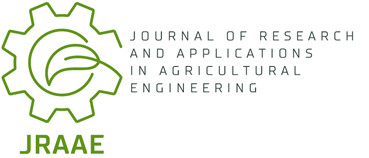Current issue
Online First
Archive
Instructions for Authors
Guide for Authors
Peer Review Policy
Research Ethics Policy
Crossmark Policy
Ghostwriting and Guest Authorship
Copyright
Open Access Policy
Plagiarism
About the Journal
Aim and Scope
Scientific Board
Publisher
Editorial Board
Indexing in Databases
Personal Data Protection
Repository Policy
Contact
ORIGINAL PAPER
Noninvasive estimation of marbling in lamb's carcasses
Journal of Research and Applications in Agricultural Engineering 2011;56(1):114-117
KEYWORDS
ABSTRACT
An important, and not yet solved problem in meat industry is the issue of estimating the intramuscular fat level content in the carcass. Solution of the problem of identification of quantity of the intramuscular fat, on the basis of Information in ultrasound images taken on lamb's carcasses or even living animal, is ofessential utilitarian importance. The amount of intramuscular fat (known as marbling) has significant impact on market value and meat's culinary usefulness. Previoitsly used methods for marbling classification in carcasses based on an analysis of animal 's age, weight and gender, or had invasive nature. These methods were estimated as unreliable and inefficient. There have been noticed growing explorers' interest in drawing conclusions based on information of data coded in a graphic form. The neuronal identification of pictorial data, with special emphasis on both quantitative and qualitative analysis, is more frequently utilized to gain and deepen the empirical data knowledge. Extraction and then classification of selected picture features, such as color or surface structure, enables one to create computer tools in order to identify these objects presented as, for example, digital pictures. Thispaper presents an attempt to create noninvasive method to classify marbling, based on ultrasound images, computer image analysis and artificial neural networks.
REFERENCES (7)
1.
Malina W., Smiatacz M. Metody cyfrowego przetwarzania obrazów (Methods of digital image processing). Warszawa: Akademicka oficyna Wydawnicza EXIT, 2005. ISBN 83-87674-93-1.
2.
Nowakowski K., Boniecki P.: Wpływ liczby zmiennych na jakość działania neuronowego modelu do identyfikacji wybranych uszkodzeń ziarniaków (The impact of the number of va-riables on the operation ąuality of neuron model for identify-ing mechanical damage of corn seeds). Inżynieria rolnicza, 2008, Vol. 6(104), str. 145-151, Kraków.
3.
Osowski S. Sieci neuronowe do przetwarzania informacji (Neural Networks for information processing). Warszawa, OWPW, 2000.
4.
Przybylak A., Boniecki P., Ślósarz P., Kozłowski R.J.: Neuronowa analiza zdjęć ultrasonograficznych w procesie identyfikacji poziomu zawartości tłuszczu - badania wstępne (Neural analysis of the ultrasonographic images in the intramuscular fat level content identification process - preliminary research). Inżynieria Rolnicza, 2008, nr 6(104), s. 159-167.
5.
Ślósarz P., Stanisz M., Pietrzak M., Gut A., Łyczyński A and Steppa R. The use of computer image analysis for evaluation of selected meat ąuality indices in lambs. Arch. Tierz., Dummerstorf, 47, Special Issue, 2004, pp. 169-174.
6.
Tadeusiewicz R., Korohoda P. Komputerowa analiza i przetwarzanie obrazów (Computer processing and image analysis). Kraków, FPT, 1997.
7.
Valma J Robertson, Kerry G Baker. A Review of Therapeutic Ultrasound: Effectiveness Studies. Physical Therapy, 2001., 81 (7).
Share
RELATED ARTICLE
We process personal data collected when visiting the website. The function of obtaining information about users and their behavior is carried out by voluntarily entered information in forms and saving cookies in end devices. Data, including cookies, are used to provide services, improve the user experience and to analyze the traffic in accordance with the Privacy policy. Data are also collected and processed by Google Analytics tool (more).
You can change cookies settings in your browser. Restricted use of cookies in the browser configuration may affect some functionalities of the website.
You can change cookies settings in your browser. Restricted use of cookies in the browser configuration may affect some functionalities of the website.


